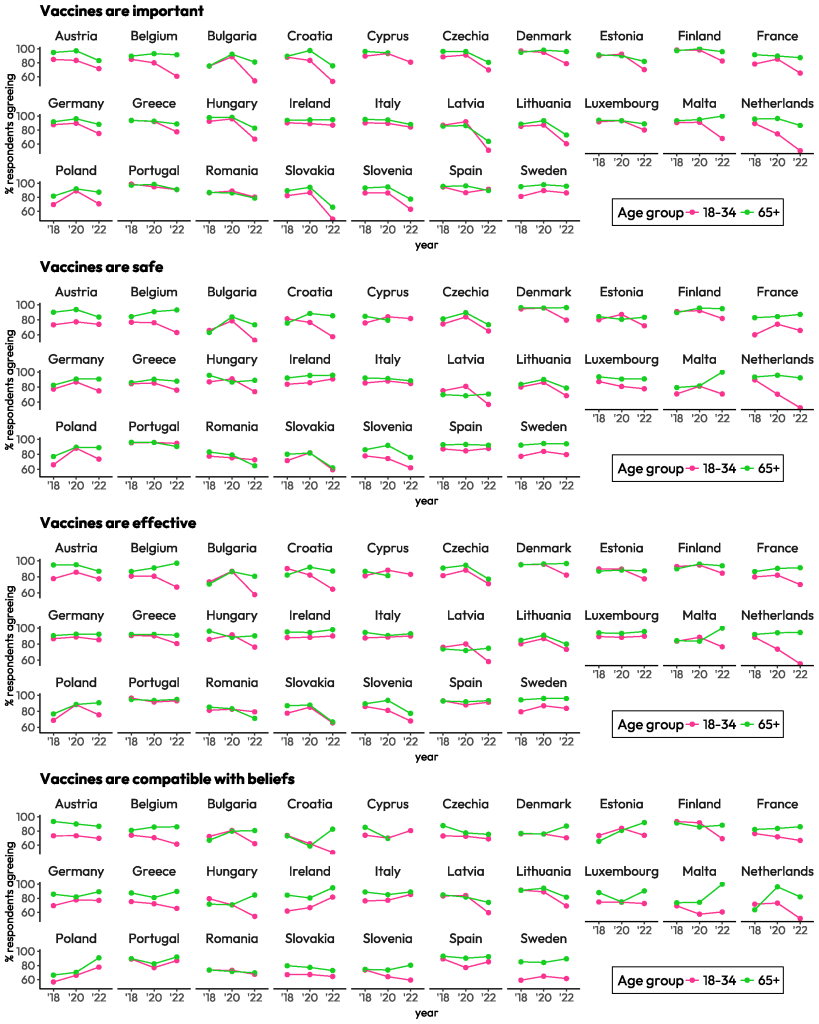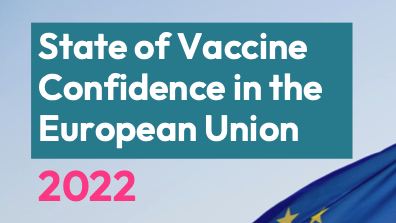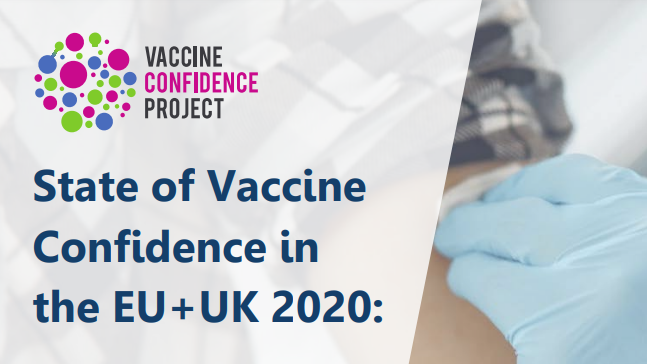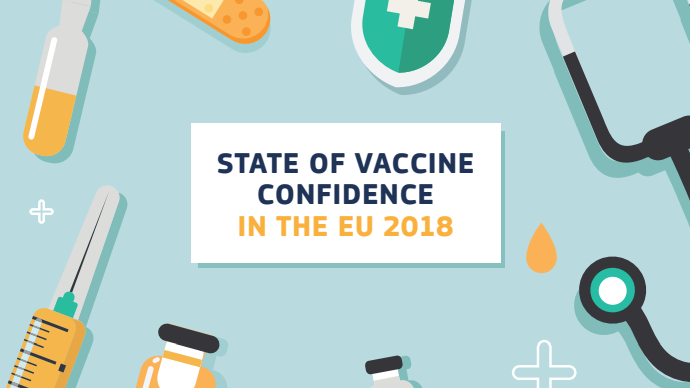Overview
In 2018, the European Commission engaged the VCP to create the first “State of Vaccine Confidence in the EU” report.
Building on a 2015 global survey by the VCP, the report used the Vaccine Confidence Index survey tool to examine levels of public confidence in immunisation across the 27 European Union member states and the UK, and found the European region had the lowest level of confidence in the safety and effectiveness of vaccines.
Following the report, the European Council recommended strengthened cooperation against vaccine-preventable diseases (2018/C 466/01) and welcomed the European Commission’s Intention to:
“[produce] on a regular basis, for example in the context of the State of Health in the EU process, a report on the state of vaccine confidence in the EU, to monitor attitudes to vaccination.”
Since then, the VCP has conducted research bi-annually to monitor public attitudes to vaccines across the region and examine trends since 2018.
Methodology
For the most recent report, a total of 25,143 members of the general public and 3,012 healthcare professionals were surveyed across the EU’s 27-member states (EU-27) between March and August 2022.
Vaccine confidence is measured across the European Union using the Vaccine Confidence IndexTM tool (VCI) developed by the Vaccine Confidence Project. The VCI is a set of survey items that measures confidence in vaccines generally as well as confidence towards specific vaccines and has been used to monitor and map vaccine confidence around the globe.
The VCI measures confidence across four dimensions of vaccine confidence: confidence in the importance of vaccines, confidence in their safety, confidence in the effectiveness of vaccines, and compatibility of vaccines with religious or personal beliefs. In the 2020 study, confidence was measured with respect to specific vaccines as well as perceptions to vaccines in general. The specific vaccines in the were the measles, mumps, and rubella vaccine (MMR), the human papillomavirus vaccine (HPV), and the seasonal influenza vaccine (flu). In the 2022 edition of the study, this list is extended to consider confidence in the COVID-19 vaccine.
Findings
The 2020 edition of the “State of Vaccine Confidence in the EU” report found that confidence in the safety and importance of vaccines generally increased between 2018-2020, and that in most EU countries, vaccine confidence was significantly higher among men and those aged >65.
General Vaccines
Importance
Percentage of people who strongly agree that vaccines are important. “Neither” encompasses “Do not know”, “No Response”, “Tend to agree” and “Tend to disagree”.
Safety
Percentage of people who strongly agree vaccines are safe. “Neither” encompasses “Do not know”, “No Response”, “Tend to agree” and “Tend to disagree”.
Effectiveness
Percentage of people who strongly agree vaccines are effective. “Neither” encompasses “Do not know”, “No Response”, “Tend to agree” and “Tend to disagree”.
However, the 2022 report found that this trend was reversed, with overall vaccine confidence declining among the general public since 2020, to roughly the same levels as 2018. The report found that:
- Agreement that vaccines are important, safe, effective, and compatible with beliefs has fallen compared to 2020 values. Agreement that vaccines are important and effective are also below 2018 levels, but agreement that vaccines are safe and compatible with beliefs are higher than 2018 levels.
- Agreement that the MMR vaccine is safe and important has fallen since 2020 across the EU but remain above 2018 levels.
- Agreement in that the seasonal influenza vaccine is important and safe in 2022 is down slightly across the EU since 2020, but up since 2018.
- Agreement that the HPV vaccine is important and safe has fallen since 2018.
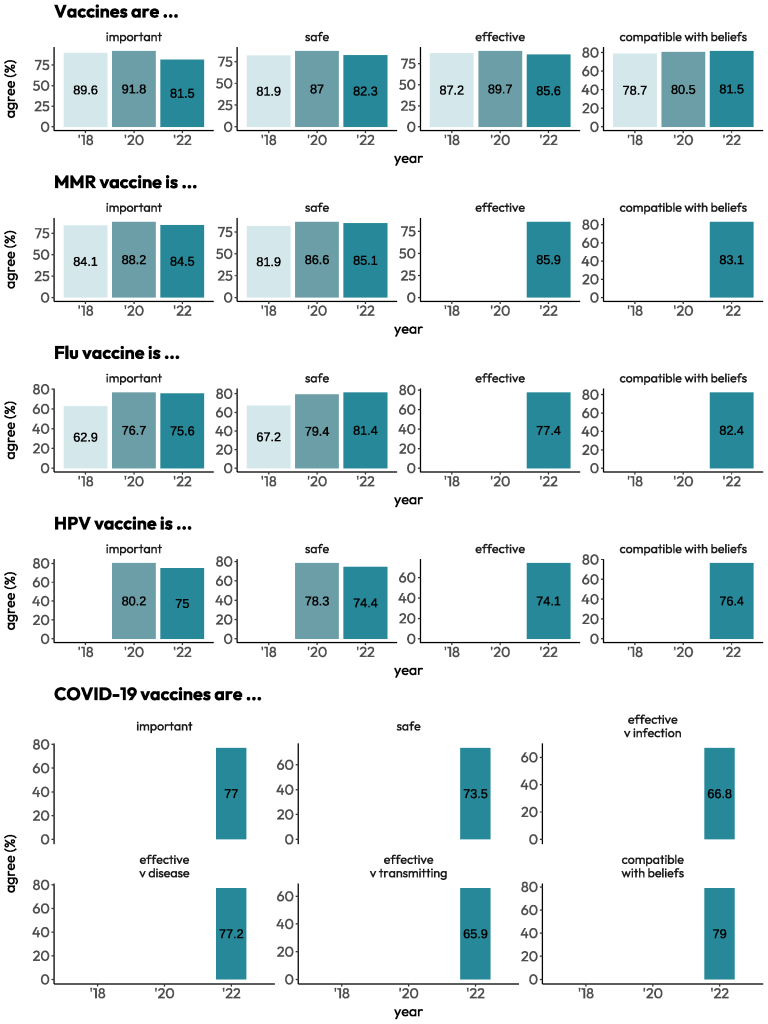
Vaccine confidence among healthcare professionals remains high in 2022
- Above 90% of HCPs surveyed in all EU member states agree that vaccines are important.
- Above 90% of HCPs surveyed in all EU member states agree that vaccines are safe, except for France, Greece, and Austria.
- Healthcare professionals across the EU are highly likely to recommend the MMR, seasonal influenza, and COVID-19 vaccines to patients, though likelihood to recommend the HPV vaccine shows high variability between countries.
- HCPs likelihood to recommend seasonal influenza and COVID-19 vaccines to pregnant women are generally lower than their likelihood to recommend these vaccines to other patients.
- Variability in vaccine confidence exists between countries, among vaccination types, and within sociodemographic characteristics.
Overall confidence in the importance, safety, effectiveness, and compatibility with beliefs is highest in Portugal and Spain and lowest in Slovakia and Latvia
- Steep declines in vaccines confidence are a worrying trend most notable in Eastern and Central Europe, the Baltics, and Netherlands.
- The MMR vaccine is considered to be the most important in 2022, followed by COVID-19, seasonal influenza, and HPV vaccines. In terms of safety, the MMR vaccine ranks the highest among the general public, and the COVID-19 vaccine, the lowest.
- Younger age groups, lower levels of education, and Muslim respondents tend to have lower levels of agreement across all confidence items in many settings compared to lower age groups, those with higher education, and atheists or agnostics, respectively.
- The HPV vaccine is viewed less favourably by females compared to males in France.
The age “gap” in confidence is widening between younger and older age groups
- Between 2018 and 2022, there is increasing polarisation between older and younger age groups in terms of perceptions of vaccines with over 65s becoming more confident and 18-34- year-olds growing less confident.
- The seasonal influenza vaccine is the only vaccination where an inverse of this trend can be seen, where the gap between older and younger age groups is narrowing.
